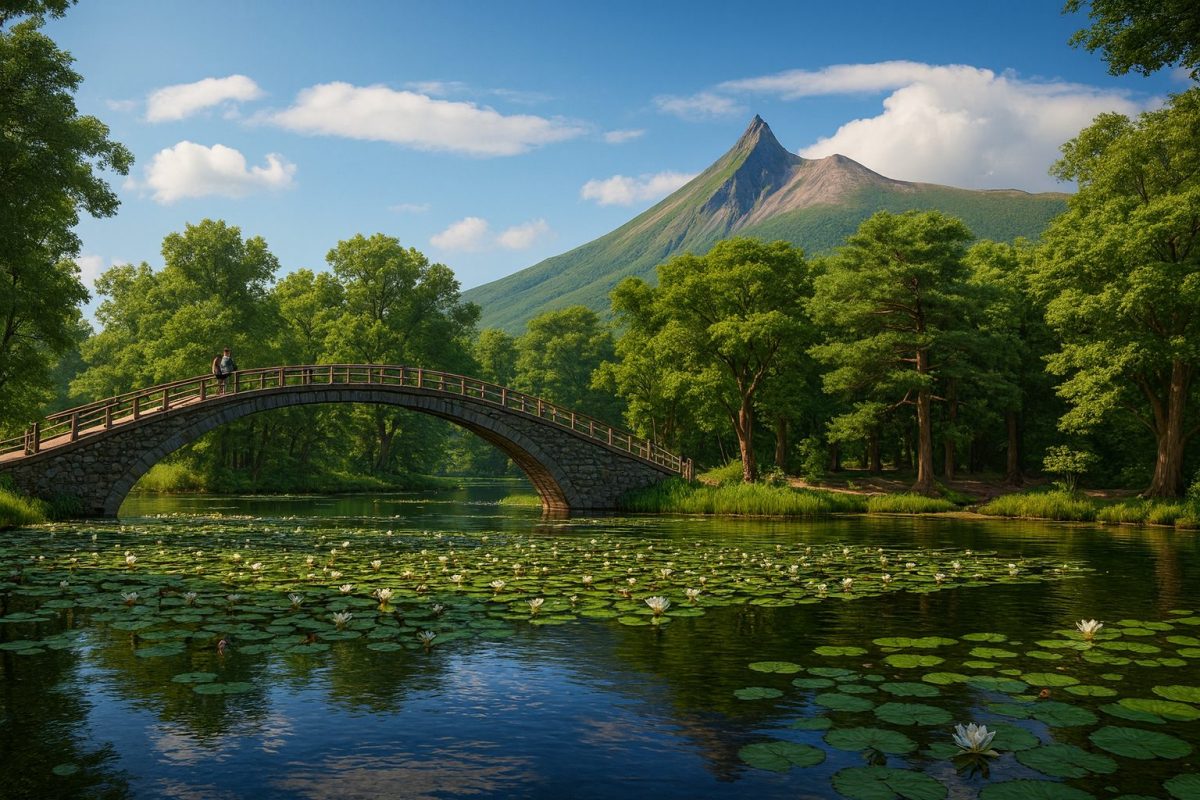| population | 27,034 peoples |
|---|---|
| area | 216.75 km² |
| population density | 125 peoples/km² |
Located in the southern part of Hokkaido within the Oshima Subprefecture, Nanae Town lies just north of Hakodate City and is home to the scenic Onuma Quasi-National Park and the majestic active volcano, Mt. Komagatake. The town has a long history influenced by Ainu culture as well as development during the Meiji era. Surrounded by rice paddies, vegetable fields, and orchards, Nanae thrives on agriculture while also flourishing as a tourist destination that highlights its seasonal landscapes. In spring, cherry blossoms decorate the town; in summer, lake activities are popular; autumn brings brilliant foliage; and winter offers skiing and snowy scenery. The local food culture is supported not only by high-quality agricultural and dairy products but also by the natural bounty of Onuma, such as smelt and water shield. Residents continue to embrace Hokkaido dialect and preserve elements of Ainu culture, blending tradition and modern life. Nanae is a place where nature and people live in harmony, offering visitors a rich and relaxing experience.
Culture & Traditions
Nanae Town is a community where the traditions of the Ainu people coexist with the pioneering spirit of the Meiji period. Agriculture has long been its economic foundation, but tourism around Onuma Quasi-National Park has become a major attraction, drawing visitors from across Japan and abroad. Daily life reflects both the Hokkaido dialect and remnants of Ainu heritage. Throughout the year, the town hosts a variety of festivals: in spring, the “Nanae Cherry Blossom Festival,” and in winter, the “Nanae Snow Lantern Festival,” both of which showcase the town’s charm. The people of Nanae live closely with nature, enjoying seasonal blessings such as locally grown vegetables and fruits, which form the basis of a vibrant food culture. Together, these elements create Nanae’s unique cultural identity.
Specialties
- Daikon Radish: Grown in well-drained soil, Nanae’s radishes are juicy and sweet, perfect for pickles and simmered dishes.
- Onions: Known for their strong sweetness and mild sharpness, Nanae onions are excellent for salads and stir-fry, and are one of the town’s signature crops.
- Potatoes: Nanae is the birthplace of the famous “Danshaku-imo” (Baron potato). Their fluffy texture makes them ideal for croquettes and potato salad.
- Fruits: Apples and grapes are widely grown, earning Nanae the title “the birthplace of Western apples in Japan.” They are also processed into wine and juice.
- Onuma Delicacies: Smelt from Lake Onuma and water shield (Junsai) from wetlands are renowned local products, with ice-fishing for smelt being a popular winter activity.
Annual Events
- Onuma Hakodate Snow & Ice Festival (February): A winter festival with snow and ice sculptures, local food stalls, and fun snow activities.
- Onuma Lake Festival (July): A summer highlight featuring fireworks and water events, attracting many visitors each year.
- Nanae Cherry Blossom Festival (Spring): Held along the famous Akamatsu Road and parks, with local food stalls and performances.
- Nanae Furusato Festival (Summer): A traditional festival featuring folk performances and exhibitions of local products.
- Nanae Industry Festival (Autumn): Celebrating the harvest season with tastings and direct sales of farm produce, crafts, and more.
Access
- From New Chitose Airport: About 90 minutes by rental car via the Hokkaido Expressway and Hakodate Shindo.
- By Hokkaido Shinkansen: From Shin-Hakodate-Hokuto Station, about 15 minutes by car or bus to Nanae. Convenient from Tokyo or Sendai.
- From Hakodate City: Accessible by Hakodate Bus or JR Hakodate Main Line in about 30–40 minutes.
- By Car from Sapporo: Around 3 hours via the Hokkaido Expressway.
Tourist Attractions
- Onuma Quasi-National Park – A scenic area with lakes Onuma, Konuma, and Junsainuma, offering boat cruises and lakeside walks.
- Mt. Komagatake – An active volcano and symbol of Nanae, popular for hiking and photography.
- Akamatsu Road – A historic pine-lined road planted to commemorate Emperor Meiji’s visit, selected as one of Japan’s “100 Roads.”
- Jodai Pasture – A scenic ranch area with panoramic views of Mt. Hakodate and the Tsugaru Strait.
- Hakodate Nanae Snow Park – A ski resort with gondola access, offering winter sports and summer views from the summit.
